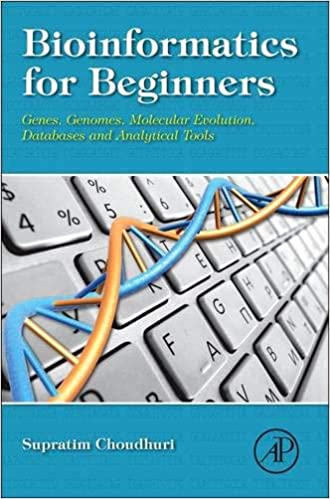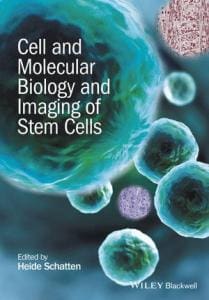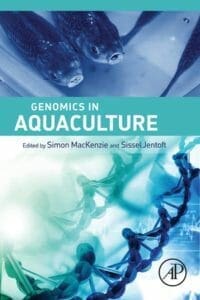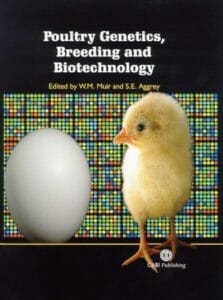Bioinformatics for Beginners Genes, Genomes, Molecular Evolution, Databases and Analytical Tools

By Supratim Choudhuri
Bioinformatics for Beginners PDF: Genes, Genomes, Molecular Evolution, Databases and Analytical Tools provides a coherent and friendly treatment of bioinformatics for any student or scientist within biology who has not routinely performed bioinformatic analysis.
The book discusses the relevant principles needed to understand the theoretical underpinnings of bioinformatic analysis and demonstrates, with examples, targeted analysis using freely available web-based software and publicly available databases. Eschewing non-essential information, the work focuses on principles and hands-on analysis, also pointing to further study options.
Table of Contents
- Preface
- Acknowledgment
- Chapter 1. Fundamentals of Genes and Genomes
- 1.1 Biological Macromolecules, Genomics, and Bioinformatics
- 1.2 DNA as the Universal Genetic Material
- 1.3 DNA Double Helix
- 1.4 Conformations of DNA
- 1.5 Typical Eukaryotic Gene Structure
- 1.6 Mutations in the DNA Sequence
- 1.7 Some Features of RNA
- 1.8 Coding Versus Noncoding RNA
- 1.9 Protein Structure and Function
- 1.10 Genome Structure and Organization
- References
- Chapter 2. Fundamentals of Molecular Evolution
- 2.1 Bioinformatics, Molecular Evolution, and Phylogenetics
- 2.2 Biological Evolution and Basic Premises of Darwinism
- 2.3 Molecular Basis of Heritable Genetic Variations—The Raw Materials for Evolution
- 2.4 Factors that Affect Gene Frequency in a Population
- 2.5 The Neutral Theory of Evolution
- 2.6 Molecular Clock Hypothesis in Molecular Evolution
- 2.7 Molecular Phylogenetics
- References
- Chapter 3. Genomic Technologies
- 3.1 Advances in Genomics
- 3.2 From Sanger Sequencing to Pyrosequencing
- 3.3 Pyrosequencing, Mutation Detection, and SNP Genotyping
- 3.4 Next-Generation Sequencing Platforms
- 3.5 Next-next-generation Sequencing Technology
- 3.6 High-Density Oligonucleotide-Probe-based Array to Investigate Genome Expression
- 3.7 Genome-Wide Mutagenesis, Genome Editing, and Interference of Genome Expression
- 3.8 Special Topic: Optical Mapping of DNA
- References
- Chapter 4. The Beginning of Bioinformatics
- 4.1 Margaret Dayhoff, Richard Eck, Robert Ledley, and the Beginning of Bioinfomatics
- 4.2 Definition of Bioinformatics
- 4.3 Bioinformatics Versus Computational Biology
- 4.4 Goals of Bioinformatic Analysis
- 4.5 Bioinformatics Technical Toolbox
- References
- Chapter 5. Data, Databases, Data Format, Database Search, Data Retrieval Systems, and Genome Browsers
- 5.1 Genomic Data
- 5.2 Sequence Data Formats
- 5.3 Conversion of Sequence Formats Using Readseq
- 5.4 Primary Sequence Databases—GenBank, EMBL-Bank, and DDBJ
- 5.5 Secondary Databases
- 5.6 Some Examples of Publicly Available Secondary and Specialized Databases
- 5.7 Data Retrieval
- 5.8 An Example of Retrieval of mRNA/Gene Information
- 5.9 Data Visualization in Genome Browsers
- 5.10 Using Map Viewer to Search the Genome
- 5.11 A Note on the State of the Sequence-Assembly Data in Different Databases
- References
- Chapter 6. Sequence Alignment and Similarity Searching in Genomic Databases: BLAST and FASTA
- 6.1 Evolutionary Basis of Sequence Alignment
- 6.2 Three Terms—Sequence Identity, Sequence Similarity, and Sequence Homology—And Their Proper Usage
- 6.3 Sequence Identity and Sequence Similarity
- 6.4 Global Versus Local Alignment
- 6.5 Pairwise and Multiple Alignment
- 6.6 Alignment Algorithms, Gaps, and Gap Penalties
- 6.7 Scoring Matrix, Alignment Score, and Statistical Significance of Sequence Alignment
- 6.8 Database Searching with the Heuristic Versions of the Smith–Waterman Algorithm—BLAST and FASTA
- 6.9 Sequence Comparison, Synteny, and Molecular Evolution
- References
- Chapter 7. Additional Bioinformatic Analyses Involving Nucleic-Acid Sequences
- 7.1 Genome Sequencing
- 7.2 Sequence Assembly
- 7.3 Genome Annotation
- 7.4 Prediction of Promoters, Transcription-Factor-Binding Sites, Translation Initiation Sites, and the ORF
- 7.5 Restriction-Site Mapping of the Input Sequence
- 7.6 RNA Secondary-Structure Prediction
- 7.7 Microarray Analysis
- 7.8 Detection of Sequence Polymorphism and the SNP Database
- References
- Chapter 8. Additional Bioinformatic Analyses Involving Protein Sequences
- 8.1 Protein Structure
- 8.2 Peptide Bond, Peptide Plane, Bond Rotation, Dihedral Angles, and Ramachandran Plot
- 8.3 Prediction of Physicochemical Properties of a Protein
- 8.4 Prediction of Protease Digestibility
- 8.5 Hydrophobicity, Hydrophilicity, and Antigenicity Prediction, and the Hydropathy Plot
- 8.6 Prediction of Post-Translational Modification and Sorting
- 8.7 Secondary-Structure Prediction
- 8.8 Prediction of Domains and Motifs
- 8.9 Viewing the 3D Structure of Proteins (And Other Biological Macromolecules)
- 8.10 Allergenic Protein Databases and Protein-Allergenicity Prediction
- 8.11 Intrinsically Disordered Protein Analysis
- References
- Chapter 9. Phylogenetic Analysis
- 9.1 Phylogenetics and the Widespread Use of the Phylogenetic Tree
- 9.2 Phylogenetic Trees
- 9.3 Phylogenetic Analysis Tools
- 9.4 Principles of Phylogenetic-Tree Construction
- 9.5 Monophyly, Polyphyly, and Paraphyly
- 9.6 Species Trees Versus Gene Trees
- References
- Index















![Ettinger’s Textbook of Veterinary Internal Medicine 9th Edition [PDF+Videos] Ettinger’s Textbook of Veterinary Internal Medicine 9th Edition [True PDF+Videos]](https://www.vet-ebooks.com/wp-content/uploads/2024/10/ettingers-textbook-of-veterinary-internal-medicine-9th-edition-100x70.jpg)

![Textbook of Veterinary Diagnostic Radiology 8th Edition [PDF+Videos+Quizzes] Thrall’s Textbook of Veterinary Diagnostic Radiology, 8th edition PDF](https://www.vet-ebooks.com/wp-content/uploads/2019/09/textbook-of-veterinary-diagnostic-radiology-8th-edition-100x70.jpg)






